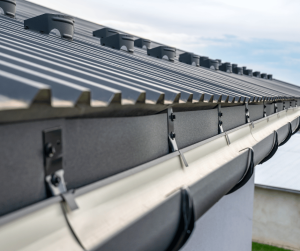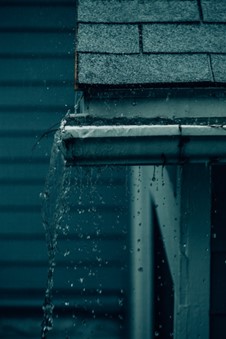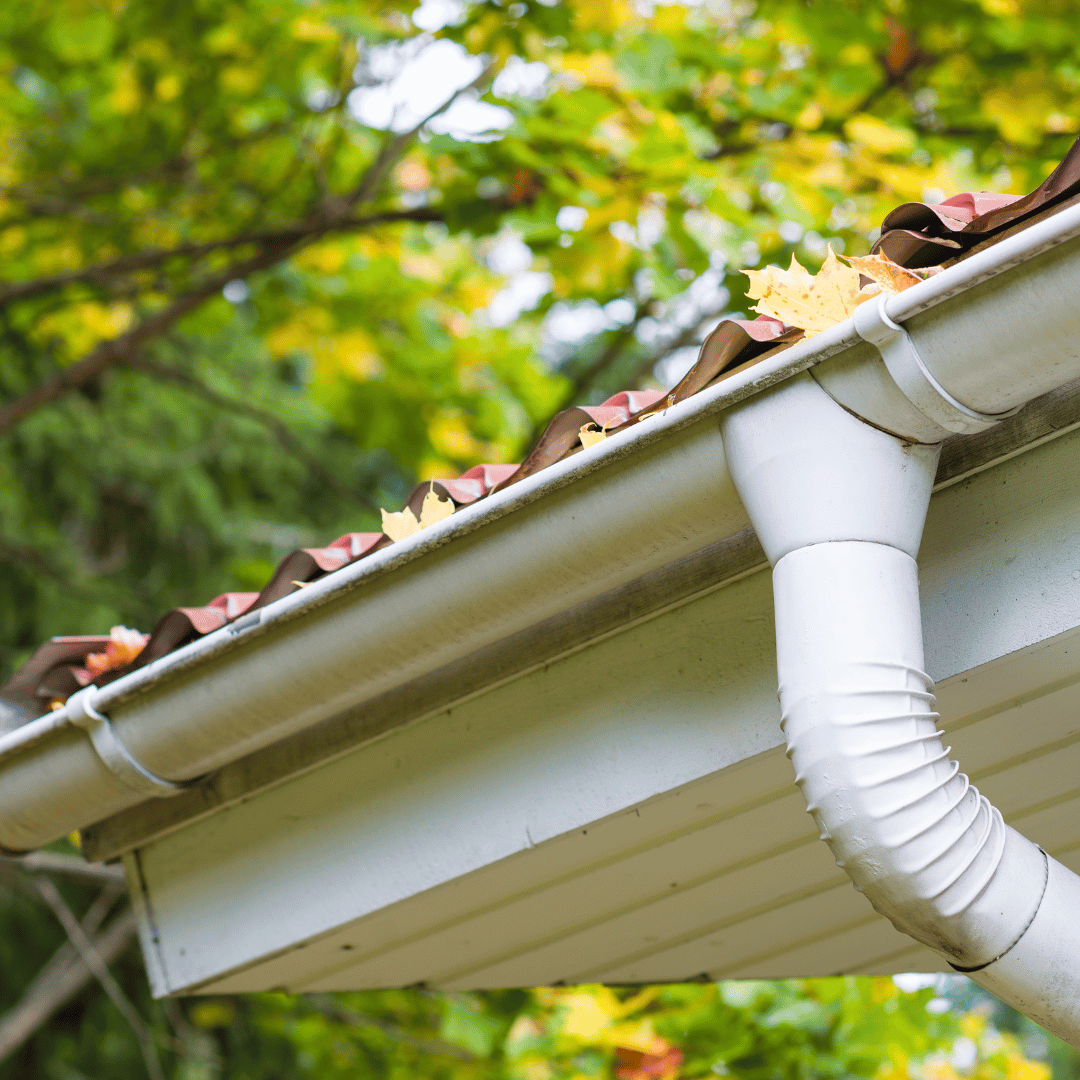
Mastering Gutter Seam Leak Repair
Gutters play a crucial role in protecting our homes from water damage by directing rainwater away from the foundation and exterior walls. However, over time, gutter seams can develop leaks, compromising their effectiveness and potentially leading to costly repairs. At HomeSmiles, we understand the importance of maintaining gutters as part of both interior and exterior home maintenance to prevent water damage and ensure the longevity of your home.
In this comprehensive guide, we’ll explore common causes of gutter seam leaks and provide practical solutions for repairing them. Whether you’re dealing with a minor leak or a more significant issue, we’re here to help you address the problem effectively. By taking proactive steps to repair gutter seam leaks, you can protect your home from water damage and avoid the need for costly repairs down the line. Let’s dive in and learn how to keep your gutters in top condition with HomeSmiles.
Common Causes of Gutter Seam Leaks
Gutter seam leaks can occur for a variety of reasons, ranging from normal wear and tear to more serious structural issues. Understanding the common causes of gutter seam leaks is essential for effectively addressing the problem. Here are some of the most common reasons why gutter seams may develop leaks:
Age: Over time, the materials used in gutter seams, such as caulk or sealant, may degrade, leading to cracks and gaps that allow water to seep through.
Wear and Tear: Exposure to the elements, including rain, snow, and sunlight, can gradually wear down gutter materials, weakening seams and increasing the risk of leaks.
Improper Installation: Poorly installed gutters may have seams that are not properly sealed or secured, allowing water to escape.
Debris Buildup: Leaves, twigs, and other debris can accumulate in gutters, causing clogs that put pressure on seams and create opportunities for leaks.
Weather Damage: Severe weather events, such as storms or heavy winds, can cause gutter seams to become loose or damaged, leading to leaks.
By addressing these common causes of gutter seam leaks, homeowners can take proactive steps to protect their homes from water damage and ensure the longevity of their gutter systems. In the next sections, we’ll discuss practical solutions for repairing leaky gutter seams and restoring the integrity of your gutters.
How to Fix a Leaky Gutter Seam
Repairing a leaky gutter seam is a relatively straightforward process that can be done with a few simple tools and materials. Here’s a step-by-step guide to fixing a leaky gutter seam:
Identify the Leak: Start by inspecting your gutters to locate the source of the leak. Look for signs of water dripping or staining around the seams.
Clean the Gutter: Use a ladder to access the gutter and remove any debris or obstructions that may be blocking the seam. Use a gutter scoop or a gloved hand to clear out leaves, twigs, and other debris.
Dry the Area: Use a clean cloth or towel to dry the area around the leaky seam thoroughly. It’s essential to work on a dry surface to ensure proper adhesion of the sealant.
Apply Gutter Sealant: Once the area is dry, apply a generous amount of gutter sealant to the leaky seam. Use a caulking gun to apply the sealant evenly along the entire length of the seam.
Smooth the Sealant: Use a putty knife or your finger to smooth out the sealant and ensure that it forms a tight seal along the seam. Pay particular attention to any cracks or gaps where water may be able to penetrate.
Allow the Sealant to Cure: Let the sealant dry and cure according to the manufacturer’s instructions. This may take several hours or overnight, depending on the type of sealant used.
Test for Leaks: Once the sealant has fully cured, run water through the gutter to test for leaks. Check the repaired seam carefully for any signs of dripping or moisture.
Repeat if Necessary: If you notice any remaining leaks or areas where the sealant did not adhere properly, repeat the sealing process as needed until the leak is fully repaired.
By following these steps, you can effectively repair a leaky gutter seam and prevent further water damage to your home. Regular inspection and maintenance of your gutters are essential for identifying and addressing leaks promptly. If you’re not comfortable performing gutter repairs yourself, consider hiring a professional gutter repair service like HomeSmiles to ensure the job is done correctly.
How to Fix a Leaking Gutter Joint
Repairing a leaking gutter joint follows a similar process to fixing a leaky gutter seam but requires specific attention to the connection points between gutter sections. Here’s a step-by-step guide to fixing a leaking gutter joint:
Identify the Leak: Inspect the gutter joints to locate the source of the leak. Leaks often occur at the joints where two gutter sections meet or where downspouts connect.
Clean the Gutter: Remove any debris or obstructions from the gutter, focusing on the area around the leaking joint. Use a gutter scoop or a gloved hand to clear out leaves, twigs, and other debris.
Dry the Area: Thoroughly dry the area around the leaking joint using a clean cloth or towel. Ensure that the surface is completely dry before proceeding with repairs.
Apply Gutter Sealant: Apply a liberal amount of gutter sealant to the leaking joint, covering the entire area where the two gutter sections meet. Use a caulking gun to apply the sealant evenly and fill any gaps or cracks.
Secure the Joint: If the leaking joint is loose or not properly aligned, use gutter screws or rivets to secure the sections together. Ensure that the joint is tight and properly sealed before proceeding.
Smooth the Sealant: Use a putty knife or your finger to smooth out the sealant and ensure a tight seal around the joint. Pay close attention to any areas where water may be able to penetrate.
Allow the Sealant to Cure: Allow the sealant to dry and cure according to the manufacturer’s instructions. This may take several hours or overnight, depending on the type of sealant used.
Test for Leaks: Once the sealant has fully cured, run water through the gutter to test for leaks. Check the repaired joint carefully for any signs of dripping or moisture.
Repeat if Necessary: If you notice any remaining leaks or areas where the sealant did not adhere properly, repeat the sealing process as needed until the leak is fully repaired.
By following these steps, you can effectively repair a leaking gutter joint and prevent further water damage to your home. Regular inspection and maintenance of your gutters are essential for identifying and addressing leaks promptly. If you’re not comfortable performing gutter repairs yourself, consider hiring a professional gutter repair service like HomeSmiles to ensure the job is done correctly.
Do You Need to Seal Gutter Seams?
Sealing gutter seams is an essential step in maintaining the integrity and functionality of your gutter system. While some modern gutters come with factory-sealed seams or are designed to be seamless, many traditional gutter systems require regular sealing to prevent leaks and water damage. Here are some reasons why sealing gutter seams is important:
Preventing Leaks: Gutter seams are vulnerable points where water can seep through and cause damage to your home’s exterior and foundation. Sealing these seams helps create a watertight barrier, preventing leaks and water intrusion.
Protecting Against Moisture Damage: Water infiltration from leaky gutter seams can lead to moisture damage, including rot, mold, and mildew growth. Sealing gutter seams helps protect your home from these damaging effects.
Extending Gutter Lifespan: Properly sealed gutter seams are less prone to corrosion, rust, and deterioration. By preventing water damage, sealing gutter seams can extend the lifespan of your gutter system and reduce the need for costly repairs or replacement.
Maintaining Curb Appeal: Leaky gutter seams can cause unsightly stains on your home’s exterior walls and create an unkempt appearance. Sealing gutter seams helps maintain the curb appeal of your home by preventing water stains and discoloration.
Preventing Structural Damage: Excessive water runoff from leaky gutter seams can erode soil around your home’s foundation, leading to structural instability and foundation issues. Sealing gutter seams helps prevent this type of damage by directing water away from the foundation.
Overall, sealing gutter seams is an essential maintenance task that helps protect your home from water damage and ensures the longevity of your gutter system. Whether you have traditional sectional gutters or seamless gutters, regular inspection and maintenance, including sealing gutter seams as needed, are key components of preventative home maintenance. If you’re unsure whether your gutter seams need sealing or if you’re experiencing persistent leaks despite sealing efforts, consider contacting a professional gutter repair service like HomeSmiles for expert assistance.
Can You Use Flex Seal on Gutter Seams?
Flex Seal is a popular sealant product known for its ability to create a flexible, watertight barrier on a variety of surfaces. Many homeowners wonder if Flex Seal is suitable for use on gutter seams to prevent leaks and water damage. Here’s what you need to know about using Flex Seal on gutter seams:
Effectiveness: Flex Seal can be effective for temporarily sealing minor leaks or cracks in gutter seams. Its rubberized formula adheres well to metal, plastic, and other gutter materials, creating a flexible seal that can withstand changes in temperature and weather conditions.
Temporary Solution: While Flex Seal can provide a quick and easy fix for small leaks, it may not be a permanent solution for more significant gutter seam issues. Over time, Flex Seal may degrade or wear away, especially in areas exposed to sunlight and weathering.
Application: To use Flex Seal on gutter seams, clean the area thoroughly and apply multiple coats of the sealant according to the manufacturer’s instructions. Allow each coat to dry completely before applying the next layer. Be sure to cover the entire seam and any surrounding areas where leaks may occur.
Considerations: Before using Flex Seal on gutter seams, consider the severity of the leak and the condition of your gutter system. Flex Seal may not be suitable for large or persistent leaks, and it may not adhere well to heavily corroded or damaged gutter surfaces.
Professional Advice: If you’re unsure whether Flex Seal is the right solution for your gutter seam leaks, consider seeking professional advice from a gutter repair specialist like HomeSmiles. A professional can assess the extent of the damage and recommend the most appropriate repair method for your specific situation.
In summary, Flex Seal can be a convenient option for temporarily sealing minor leaks in gutter seams, but it may not provide a long-term solution for more significant issues. If you’re experiencing persistent leaks or need assistance with gutter seam repair, consider contacting a professional gutter repair service for expert guidance and assistance.
What is the Best Sealant for Seamless Gutters?
Seamless gutters are a popular choice for homeowners due to their durability, efficiency, and aesthetic appeal. When it comes to sealing seamless gutters, choosing the right sealant is essential for ensuring a long-lasting and effective seal. Here are some factors to consider when selecting the best sealant for seamless gutters:
Compatibility: Look for a sealant that is specifically formulated for use with metal gutters, such as aluminum or steel. Ensure that the sealant is compatible with the material of your seamless gutters to ensure proper adhesion and longevity.
Flexibility: Since seamless gutters are designed to expand and contract with temperature changes, it’s essential to choose a sealant that offers flexibility. A flexible sealant can accommodate movement without cracking or breaking, ensuring a watertight seal over time.
Durability: Opt for a sealant that is resistant to UV rays, weathering, and environmental factors to ensure long-term durability. A durable sealant will withstand exposure to sunlight, rain, snow, and temperature fluctuations without degrading or deteriorating.
Waterproofing: The primary purpose of gutter sealant is to create a waterproof barrier that prevents leaks and water infiltration. Choose a sealant with excellent waterproofing properties to ensure maximum protection against water damage.
Ease of Application: Consider the ease of application when choosing a gutter sealant. Look for a sealant that is easy to apply and requires minimal preparation and cleanup. This will help streamline the sealing process and ensure a professional-looking finish.
Brand Reputation: Research reputable brands known for producing high-quality gutter sealants. Read customer reviews and testimonials to gauge the performance and reliability of different sealant products.
Based on these factors, silicone-based sealants and polyurethane sealants are commonly recommended for sealing seamless gutters. These sealants offer excellent adhesion, flexibility, and durability, making them ideal for long-lasting gutter repairs.
Ultimately, the best sealant for seamless gutters will depend on factors such as gutter material, climate, and application method. If you’re unsure which sealant is right for your gutters, consider consulting with a professional gutter repair service like HomeSmiles for personalized advice and assistance.
What is Used to Seal Gutter Seams?
Sealing gutter seams is a critical step in maintaining the integrity of your gutter system and preventing water damage to your home. Several different materials and products can be used to seal gutter seams effectively. Here are some common options:
Silicone Sealant: Silicone sealant is a popular choice for sealing gutter seams due to its excellent adhesion, flexibility, and weather resistance. It forms a durable, waterproof seal that can withstand temperature fluctuations and exposure to UV rays.
Polyurethane Sealant: Polyurethane sealant is another suitable option for sealing gutter seams. It offers similar properties to silicone sealant, including flexibility and durability, making it an effective choice for long-lasting gutter repairs.
Gutter Sealant Tape: Gutter sealant tape is a self-adhesive tape specially designed for sealing gutter seams. It features a waterproof backing that adheres tightly to gutter surfaces, providing a quick and easy solution for minor leaks and gaps.
Gutter Patch Kits: Gutter patch kits typically include a combination of sealant and patching material designed specifically for repairing gutter seams. These kits may contain epoxy-based sealants or other specialized products formulated for gutter repair.
Butyl Rubber Sealant: Butyl rubber sealant is a flexible, rubber-like compound that adheres well to metal and plastic gutter materials. It forms a watertight seal that can withstand extreme weather conditions and temperature changes.
Liquid Rubber Sealant: Liquid rubber sealant is a versatile sealing compound that can be applied as a liquid and cures to form a flexible, rubberized coating. It provides excellent adhesion and waterproofing properties, making it suitable for sealing gutter seams.
When choosing a sealant for gutter seams, consider factors such as compatibility with gutter materials, durability, flexibility, and ease of application. It’s essential to select a sealant that is specifically formulated for gutter repair and suitable for the unique challenges of outdoor applications.
If you’re unsure which sealant is best for your gutter seams or if you need assistance with gutter repair, consider consulting with a professional gutter repair service like HomeSmiles. A professional can assess the condition of your gutters and recommend the most appropriate sealant and repair method for your specific needs.
Maintaining well-sealed gutter seams is crucial for protecting your home from water damage and preserving its structural integrity. By addressing leaks and sealing seams promptly, you can prevent costly repairs and ensure the longevity of your gutter system.
In this comprehensive guide, we’ve explored common causes of gutter seam leaks and provided practical solutions for repairing them. From fixing leaky seams to sealing gutter joints, we’ve covered the essential steps to keep your gutters in top condition.
Whether you choose silicone sealant, polyurethane sealant, or another sealing product, the key is to select a high-quality material that offers durability, flexibility, and weather resistance. Regular inspection and maintenance of your gutters are also essential for identifying and addressing leaks before they cause significant damage to your home.
At HomeSmiles, we specialize in preventative home maintenance services, including gutter repair and maintenance. Our experienced technicians can help you keep your gutters in excellent condition and protect your home from water damage.
Don’t let leaky gutter seams compromise the integrity of your home. Contact HomeSmiles today to schedule a professional gutter inspection and repair service. Let us help you maintain a clean, safe, and well-protected home for years to come.
Remember, with HomeSmiles, all those “honey-do” items on your list are being taken care of, so you can enjoy peace of mind and avoid costly repairs down the line.
- Protecting Your Property: Why the Right Cleaning Method Makes All the Difference
- The #1 Thing That’s Dulling Your Curb Appeal (And How to Fix It)
- How Maintenance Bundles Provide Peace of Mind for Busy Small Business Owners and Facility Managers
- Essential vs. Complete Home Packages: Choosing the Right Preventive Care for Your Property
- How a Simplified Service Model Benefits Both Homeowners and Franchisees Alike


